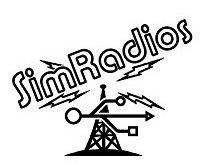How much does this cost?
Which types of headsets are supported?
Which types of microphones are supported?
Which is the difference between electret and dynamic microphones?
Do I need an adapter cable with a ground support headset?
Which types of PTT (Push-To-Talk) are supported?
What is DIS?
What are the software operating requirements?
Can you please add a new product or new feature to the SimRadios web site?
What is the return policy?
How do I integrate the Simradios device with another system?
Can SimRadios build a new model, exclusively sold to my company, program or project?
What is COTS?
Is the adapter Plug-and-Play with Windows?
What is the lead time?
Can I become a SimRadios distributer?
Is SimRadios hiring?
Are there any ITAR restrictions?
How much does this cost?
For pricing information, see our catalog on our products page here.
Back to Top
Which types of headsets are supported?
The type of headset supported depends on the adapter model, connector type and microphone type (Electret or Dynamic). The SimHeadset Adapter Av and Deluxe Av both support all General Aviation headsets such as David Clark’s H10-13.4, AvComm’s AC900, Telex’s Airman 750, etc. as well as most common ground support headsets such as David Clark’s H3530. The SimHeadset Adapter Deluxe Mil supports all military and helicopter headsets with a U-174/U plug such as David Clark’s H10-76, H10-36 and SoftComm’s C-46. The CVC-1 and CVC-2 support non- Active Noise Reduction (ANR) headsets and handsets such as the DH-132A/B and H250 and ANR powered headsets such as the Bose TriPort® Tactical Headset. The CVC supports non- Active Noise Reduction (ANR) headsets and handsets such as the DH-132A/B.
Back to Top
Which types of microphones are supported?
The type of microphone supported depends on the specific adapter model. Some microphones require a 10VDC microphone bias. Our products support electret and dynamic microphones. See each product description on the product page for specific details.
product page.
Back to Top
What is the difference between electret and dynamic microphones?
Electret microphones (also known as “condenser” microphones) contain an electrically-charged diaphragm. They produce extremely little output and require an amplifier. Dynamic microphones use a moving coil (or similar) device which generates a voltage. Dynamic microphones convert energy via electromagnetic induction, while Electret microphones do so with electrostatic principles. Electret microphones are active, while dynamic microphones are usually passive. Electret microphones are more complex than dynamic mics and are typically more costly.
Back to Top
Do I need an adapter cable with a ground support headset?
No. Ground support headsets (such as David Clark’s Model H3530) can be used without the use of an adapter cable.
Back to Top
Which types of PTT (Push-To-Talk) are supported?
SimHeadset Adapter Av supports an inline PTT button on the tip of the microphone jack. SimHeadset Adapter Mil has a 1/4″ phono jack which can accept any momentary switch. PJ7 Adapter supports PTT devices like the Plantronics SHS1890. The CVC Adapters all support PTT devices wired to pin U-283/U 6-contact connector.
Back to Top
What is DIS?
Distributed Interactive Simulation ( DIS ) is an open standard for conducting real-time platform-level wargaming across multiple host computers and is used worldwide especially by military organizations but also by other agencies such as those involved in space exploration and medicine.
Back to Top
What are the software operating requirements?
Windows 7, 8, 10 or 11.
Back to Top
Can you please add a new product or new feature to the SimRadios web site?
Yes. Contact us for details.
Back to Top
What is the return policy?
All sales are final. We do not offer any refunds. Please verify compatibility prior to purchase. If you are not sure if it will work with your system, you may be eligible for a free product evaluation. Contact us to apply for a free product evaluation.
Back to Top
How do I integrate the Simradios device with another system?
Most new customers perform integration and test to ensure everything is working smoothly. This can take several days, depending on the complexity of the system (and may require Non-Re-occuring Engineering, NRE). Each Simradios product includes a user manual to simplify the process. Some customers will require changes to external hardware and software in order to integrate with the Simradios device. We are here to help. Contact our support team: support@simradios.com
Back to Top
Can SimRadios build a new model, exclusively sold to my company, program or project?
Yes. Contact us for details.
Back to Top
What is COTS?
The ready-to-go products available on this web site are all Commercial Off The Shelf. (COTS). They are available to the general public. If you need a non-COTS custom solution, Contact us.
Back to Top
Is the adapter Plug-and-Play with Windows?
Windows recognizes each SimRadios adapter as a plug-and-play sound card. To support audio (microphone and speakers) no SW installation is required. To support the PTT function, you can use the SimPTT app, which is included.
Back to Top
What is the lead time?
We typically ship within 5 business days of your order. For large quantities, expect 4-6 weeks. For specific estimated lead times: Contact Us.
Back to Top
Can I become a SimRadios distributor?
Yes. Contact us to request an application: Contact Us.
Back to Top
Is SimRadios hiring?
We are looking for software engineers, electrical engineers, and test technicians in Tampa, FL and Melbourne, FL. Also, we have work-from-home positions. If you are hard-working and excited about these opportunities, request an application: Contact Us.
Back to Top
Are there any ITAR restrictions?
No. The products are generic sound adapters and PTT controllers which are available to the global public civilian market. We maintain compliance programs and assist in the monitoring and control of exports.
Back to Top
